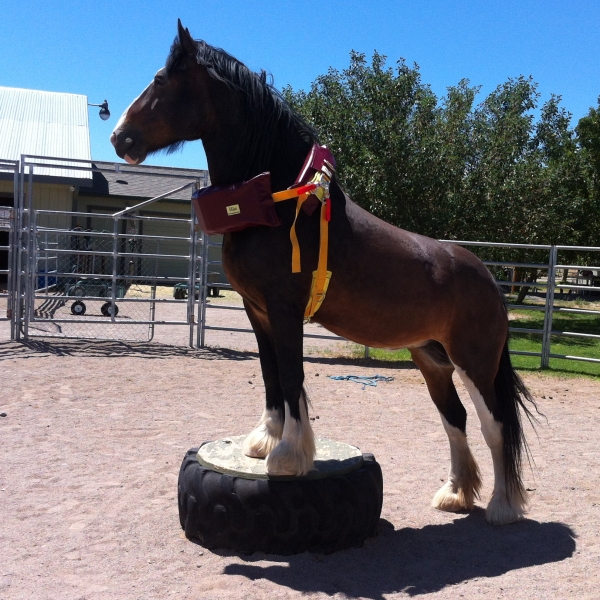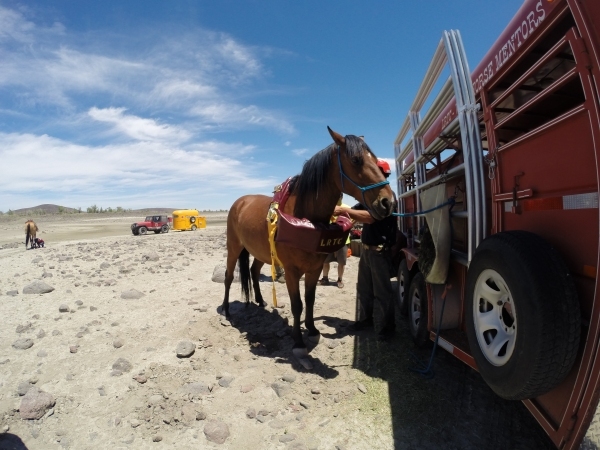
|
Least Resistance Training Concepts
|

|
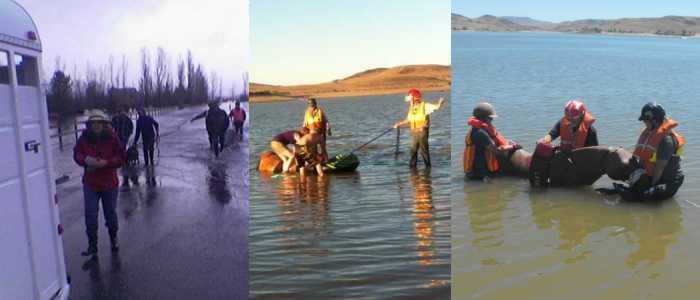
Part One - Updated February 24, 2023
The current model is adjustable from pony size to draft horse size.
|
|
This information sheet is primarily intended for persons associated with or working with the LRTC Technical Large Animal Rescue Team, however the information may be useful to other groups or private individuals who may wish to similarly equip their own technical large animal rescue team.
Removing horses and other livestock from high water warrants carefully considered actions and proper equipment. This information sheet describes the water rescue equipment carried on Incident Support Unit-1 and provides recommendations as to when and how it should be used. However nothing in this information sheet should supersede the use of sound judgment and adaptation as may be warranted due to unexpected or changing conditions.
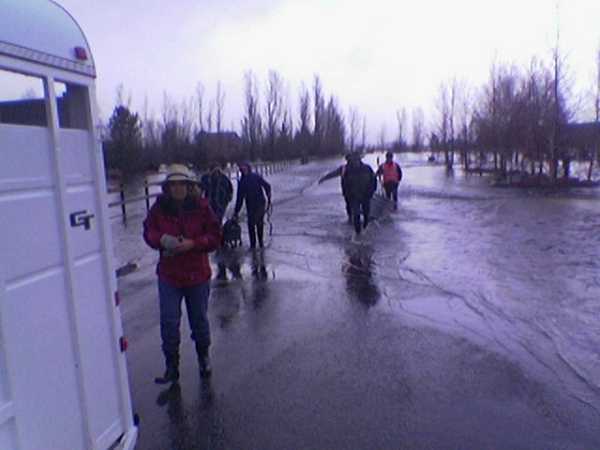
While the appropriate inventory for water rescue appears in Part Two, a significant piece of equipment is the Häst (Becker) Water Rescue Harness which is discussed in this part. There are several advantages for using a Water Rescue Harness. They include (but are not limited to) providing needed buoyancy for fatigued horses being moved through water, reducing hoof pressure on soft and potentially sticky underwater soil, helping keep horses upright in moving water or if the horse steps into unseen underwater holes, helping reduce the amount of flailing by the horse if the horse senses it may be sinking or turning over (and subsequent entanglement in the lead rope,) and the horse's head is less prone to "porposing" below the water line if the horse has chest buoyancy. The Water Rescue Harness consists of three principal parts: a back pad, a girth (or cinch) and a chest float. The three pieces can be assembled quickly using quick release clips. All elements are adjustable and the adjusting straps are sufficiently long to easily locate in complicated situations or where visibility is poor, but are not so long as to get tangled or snagged. In practice we have found it easiest to first attach the back pad and cinch, similar to attaching a driving surcingle. Next we attach the chest float. This procedure can be easily done on land in preparation of moving a horse through high water or it can be applied to a horse in the water. When applying the Water Rescue Harness onto a horse in the water, we recommend drawing the cinch under the horse using a small J-hook rather than reaching under the horse by hand. Some views of the Water Rescue Harness on a practice horse.
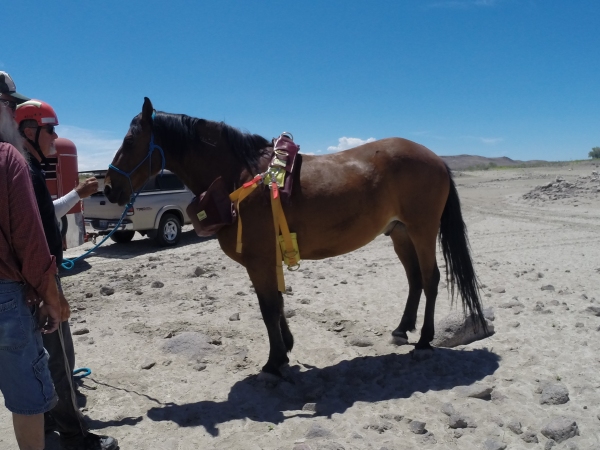
Care should be taken when removing the Water Rescue Harness. It can be rapidly released in the water if necessary however on land it is bulky and care should be taken to support the harness so that it doesn't suddenly drop on the ground and startle the horse. We prefer to unclip one side of the chest float and balance everything on the horse's back when releasing the cinch clip.
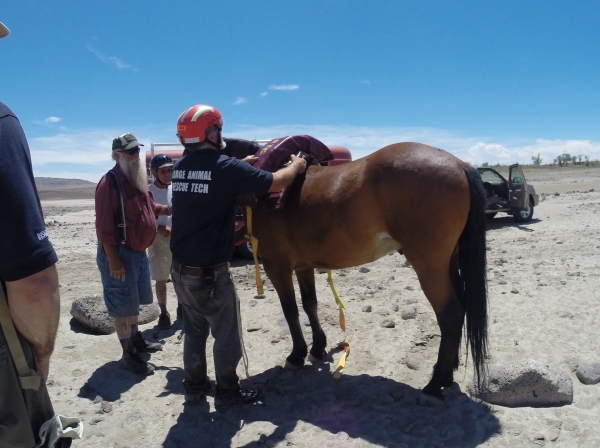
We also recommend practicing applying the harness in the water using a training mannequin.
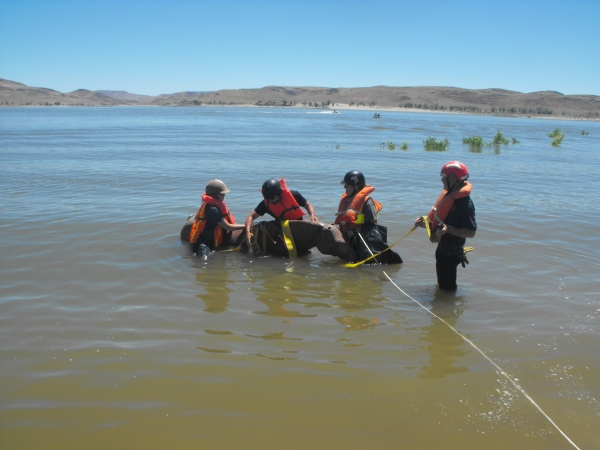
A more complete discussion on recommended response procedures appears in Part Two. |
Continue to Part Two
For more information about the Häst (Becker) Water Rescue Harness, please visit
Häst Large Animal Rescue Equipment
Return to Information Sheets and Resource Guides
Return to Sample Incident Responses
Return to LRTC TLAR / EVAC Page

The training information presented in these information sheets and guides is offered for illustrative and volunteer refresher purposes only. It is not a substitute for actual hands-on training. |
